
With all this dreary weather, I wanted to share some warmth

My View of Life on the Dock



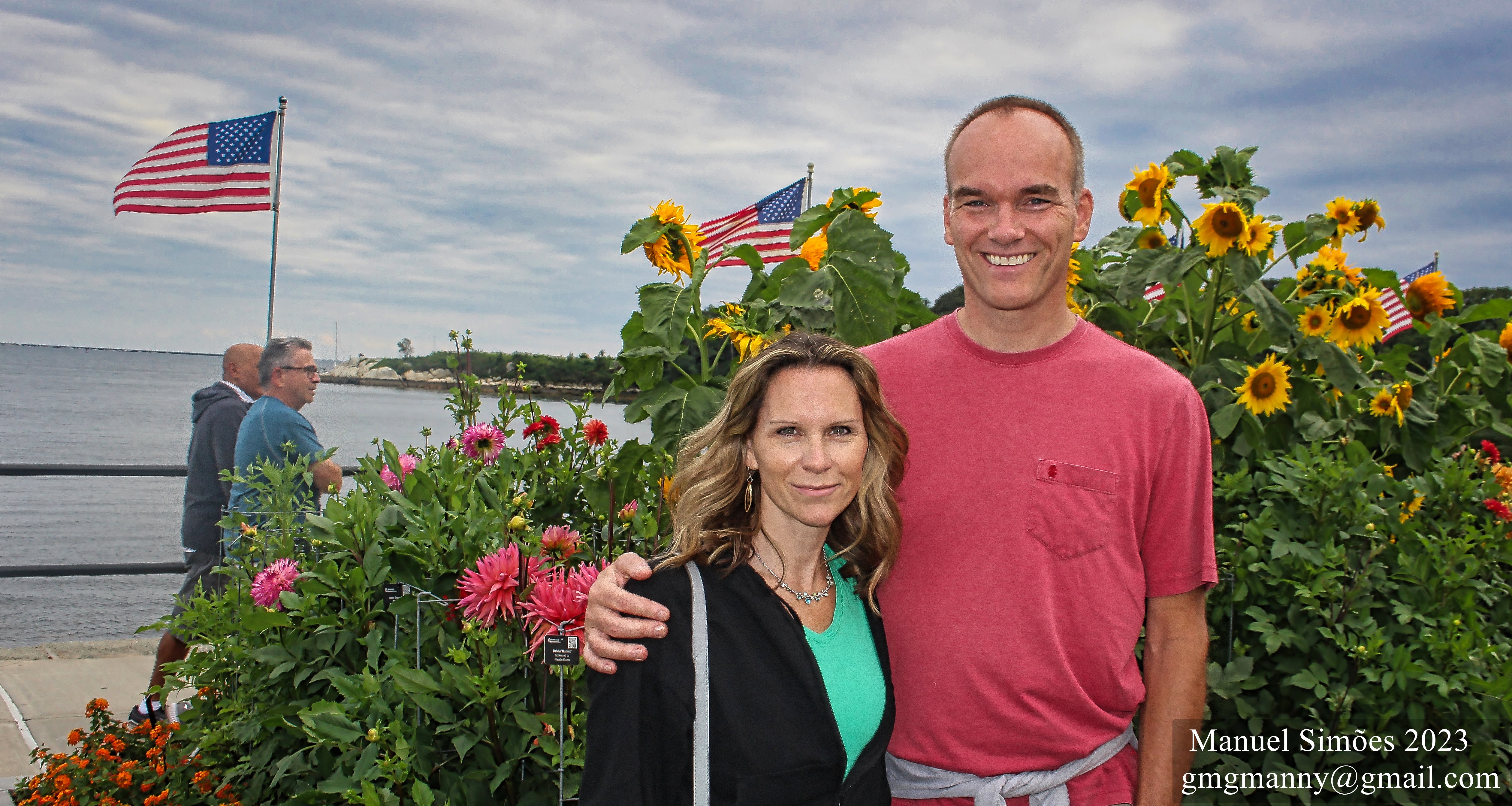


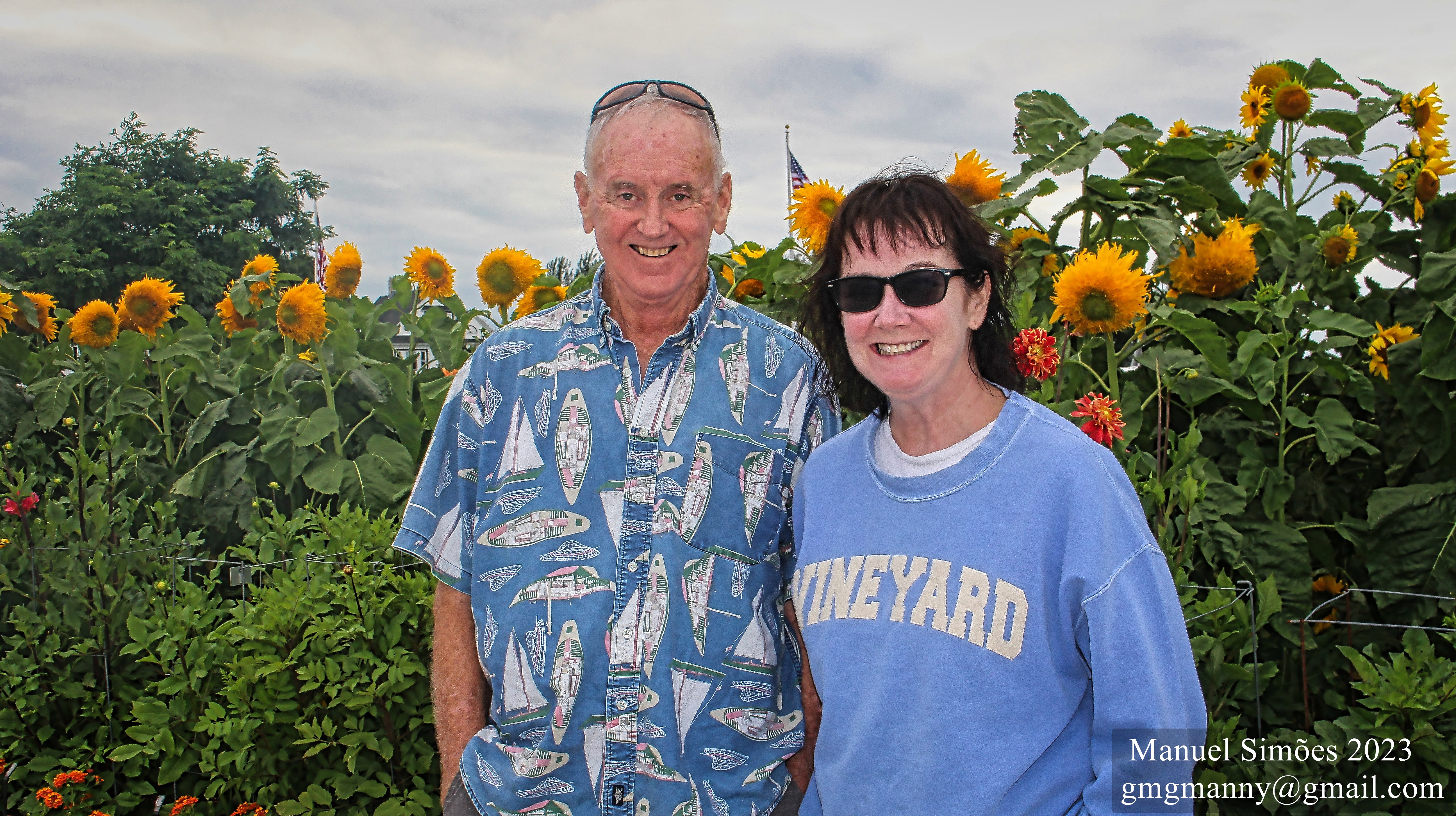

The brand new beautiful School Street Sunflower field is not to be missed. With gently rolling hills, abundantly planted rows, and a wide, easy path to stroll (easy enough for a two-year-old to navigate), the 5 acres of sunflowers is a wildflower lover’s dream.
 Paul Wegzyn and his Dad, also Paul Wegzyn, shared their enthusiasm for this exiting new venture.
Paul Wegzyn and his Dad, also Paul Wegzyn, shared their enthusiasm for this exiting new venture.
There are picnic tables for those who would like to take lunch, and positioned artfully around the fields are photo props such as tractors and bales of hay, but for the most part, the scene is straight up gorgeous sunflowers (and bees!).
The variety planted blooms in 50 to 60 days from when planted and today is day 61. Only a few flowers have droopy seed-laden heads, or have passed. NOW is the time to go as the blooms will all have expired in another two weeks.
Kissable Butterflies
School Street Sunflower Farm
At the corner of Linebrook Road and School Street (for google maps type in – 79 Linebrook Road)
Ipswich, Massachusetts
Open 8am to sunset.
The cost is eight dollars during the week, ten dollars on weekends, and the ticket covers a full day. Wristbands are available if you would like to return the same day. Children under five are free.
Instagram: @schoolstreetsunflowers
Facebook: @schoolstreetsunflowers
Thoughtful sayings posted throughout the field ~
“Wherever life plants you, bloom with grace.”
Dear Friends,
Please join me April 6th at 7pm at the Sawyer Free Library where I will be giving my Pollinator Garden program and screening several short films. This event is free and open to the public. I am looking forward to presenting this program at our wonderful Sawyer Free and hope to see you there!!
Female Ruby-throated Hummingbird and zinnia – ornithophily is the pollination of flowering plants by birds. They carry off pollen on their heads and neck to the next flower they visit.
The newly eclosed Monarch is clinging to its chrysalis case. Within moments of emerging, the two-part Monarch proboscis must zip together to form a siphoning tube. If the two parts do not join, the butterfly will not be able to drink nectar. In this photo, you can see the proboscis is not yet fully zipped.
“Following the rhythm of the seasons, celebrated landscape designer Kim Smith presents a stunning slide show and lecture demonstrating how to create a welcoming haven for bees, birds, butterflies, and other wildlife. Native plants and examples of organic and architectural features will be discussed based on their value to particular vertebrates and invertebrates.”
After collecting Monarch eggs last weekend, Nancy graciously allowed me to return to her gorgeous Cabot Farm to film and to photograph. I was there at sunrise, which is relatively early in the day for butterfly sightings however, I did see four Monarchs and two were females depositing eggs all over the field!
 View from Nancy’s Milkweed Field
View from Nancy’s Milkweed Field
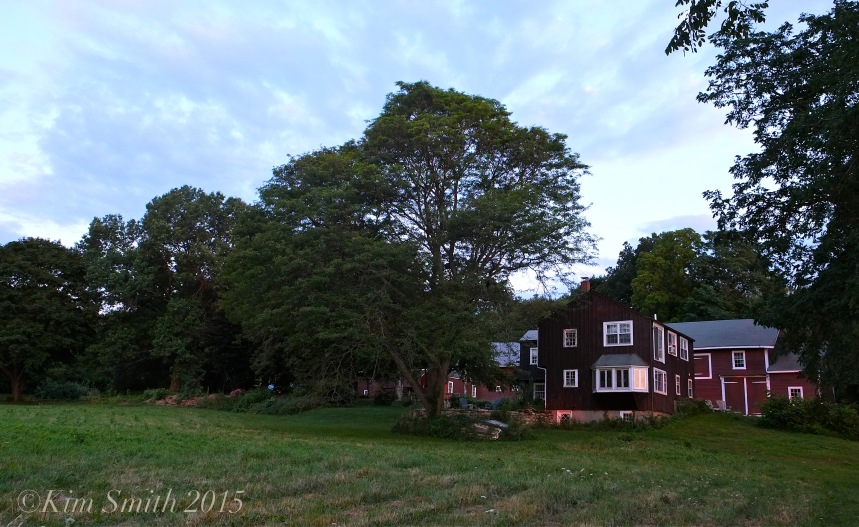

 Scarlet Runner Bean; the blossoms are beloved by hummingbirds.
Scarlet Runner Bean; the blossoms are beloved by hummingbirds.
READ MORE HERE Continue reading “GOOD MORNING FROM CABOT FARM!”
In preparation for the upcoming season of programs that I give, which are centered around designing gardens to support pollinators, one of my jobs is to refresh and update the photos that are an integral part of the presentation. This past month I have been immersed in colorful images and tomorrow I am giving my new monarch butterfly presentation at (the other) Cape. Here are some of the outtakes from my pollinator habitat programs for our winter weary eyes.
Phlox and Luna Moth
Sunflower and Joe-pye Weed
Monarch Butterfly and Cape Honeysuckle, Goleta California
 Obedient Plant (Physostegia virginiana)
Obedient Plant (Physostegia virginiana)
Below is a list of some favorite nectar- and pollen-rich bee-friendly North American wildflowers for attracting native bees and honey bees to your gardens. They are listed in order of bloom time, from spring through late summer, to provide your foragers with nourishment all growing season long.
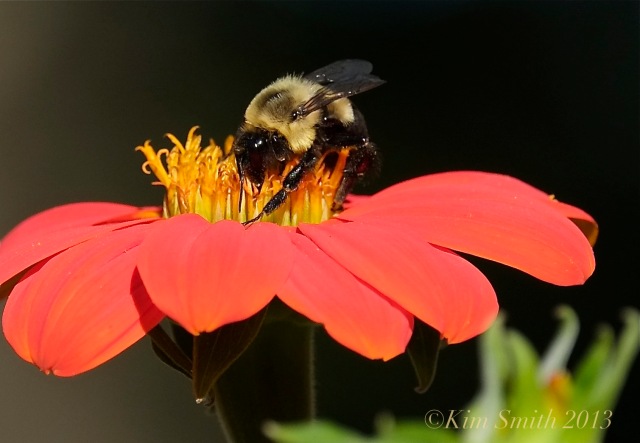 Mexican Sunflower (Tithonia rotundifolia)
Mexican Sunflower (Tithonia rotundifolia)
Wild strawberry (Fragaria viginiana)
Wild Blue Lupine (Lupinus perennis)
Common Milkweed (Asclepias syriaca)
Marsh Milkweed (Asclepias incarnata)
Black-eyed Susan (Rudbeckia hirta)
Sunflower (Helianthus annus)
Obedient Plant (Physostegia virginiana)
Seaside Goldenrod (Solidago sempervirens)
Great Blue Lobelia (Lobelia siphilitica)
Joe-pye Weed (Eupatorium purpureum)
New York Ironweed (Veronia noveboracensis)
New England Aster (Aster novae-angliae)
 Sailor Stan Sunflower (Helianthius annus)
Sailor Stan Sunflower (Helianthius annus)
 Joe-pye Weed (Eupatorium purpureum)
Joe-pye Weed (Eupatorium purpureum)
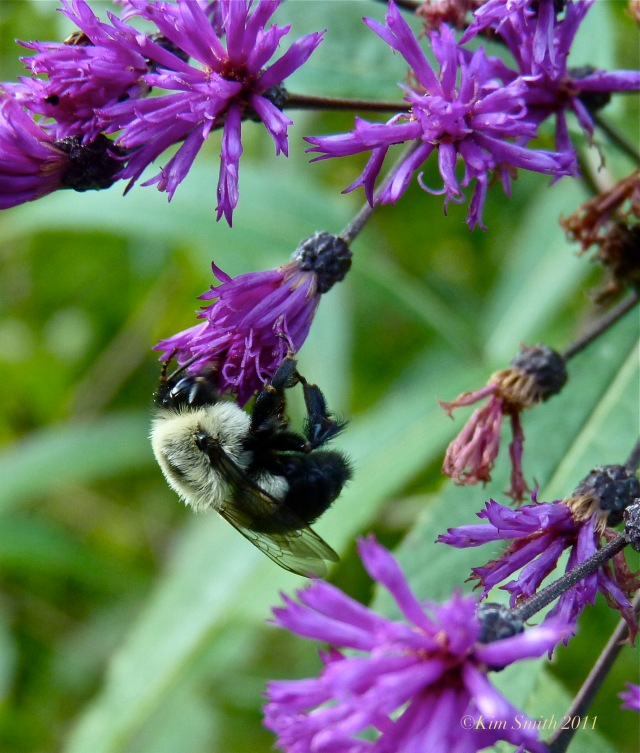 New York Ironweed (Veronia noveboracensis)
New York Ironweed (Veronia noveboracensis)
On Tuesday evening, October 15th, at 7 pm, I will be giving my program, “The Pollinator Garden,” at the Beverly Public Library. Following the rhythm of the seasons, I present a slide show (with over 100 photos!) and lecture demonstrating how to create a welcoming haven for bees, birds, butterflies, and other wildlife. Native plants and examples of organic and architectural features will be discussed based on their value to particular vertebrates and invertebrates. I hope you’ll come join me!
On Tuesday evening, October 15th, at 7 pm, I will be giving my program, “The Pollinator Garden,” at the Beverly Public Library. Following the rhythm of the seasons, I present a slide show (with over 100 photos!) and lecture demonstrating how to create a welcoming haven for bees, birds, butterflies, and other wildlife. Native plants and examples of organic and architectural features will be discussed based on their value to particular vertebrates and invertebrates. I hope you’ll come join me!
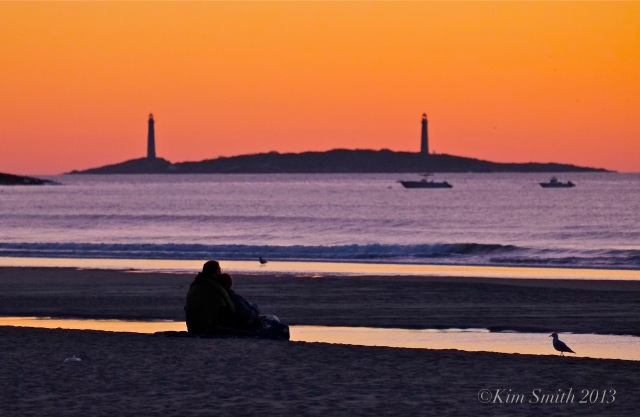 I awoke this morning before dawn to film sunrise and found a sweet gift of Virgilios sauce and amazingly fat rigatonis in the basket on my front porch. I am recovering from a leg operation and my friend Catherine Ryan called at the very moment that I was trying my personal recovery technique–on the floor doing a shoulder stand, with phone in hand–and she really got an earful. Thank you Catherine for listening to me complain about itchy leg braces and hospitals. I gave her the wrong impression though because I can walk and work–I just cannot sit or stand in one place for very long.
I awoke this morning before dawn to film sunrise and found a sweet gift of Virgilios sauce and amazingly fat rigatonis in the basket on my front porch. I am recovering from a leg operation and my friend Catherine Ryan called at the very moment that I was trying my personal recovery technique–on the floor doing a shoulder stand, with phone in hand–and she really got an earful. Thank you Catherine for listening to me complain about itchy leg braces and hospitals. I gave her the wrong impression though because I can walk and work–I just cannot sit or stand in one place for very long.
After putting the sauce and pasta in the cupboard I left to go film, and once again, the exquisite Great Blue Heron was there at Good Harbor Beach fishing amongst the reeds. For the third morning in a row I have observed a flock of cormorants leaving Salt Island en masse to fish with the gulls in the outgoing surf along the shoreline. I wonder, do they sleep there every night?
 Next stop was to a friend’s home on Rocky Neck to drop off peaches from my garden. The light was hitting the Sailor’s Stan’s sunflowers perfectly and I just had to stop and take several snapshots.
Next stop was to a friend’s home on Rocky Neck to drop off peaches from my garden. The light was hitting the Sailor’s Stan’s sunflowers perfectly and I just had to stop and take several snapshots.
By now it’s after 8:00 and I almost always go to yoga on Saturday mornings but because of the stitches, thought better of it and instead went to measure a new border at the Gloucester HarborWalk.
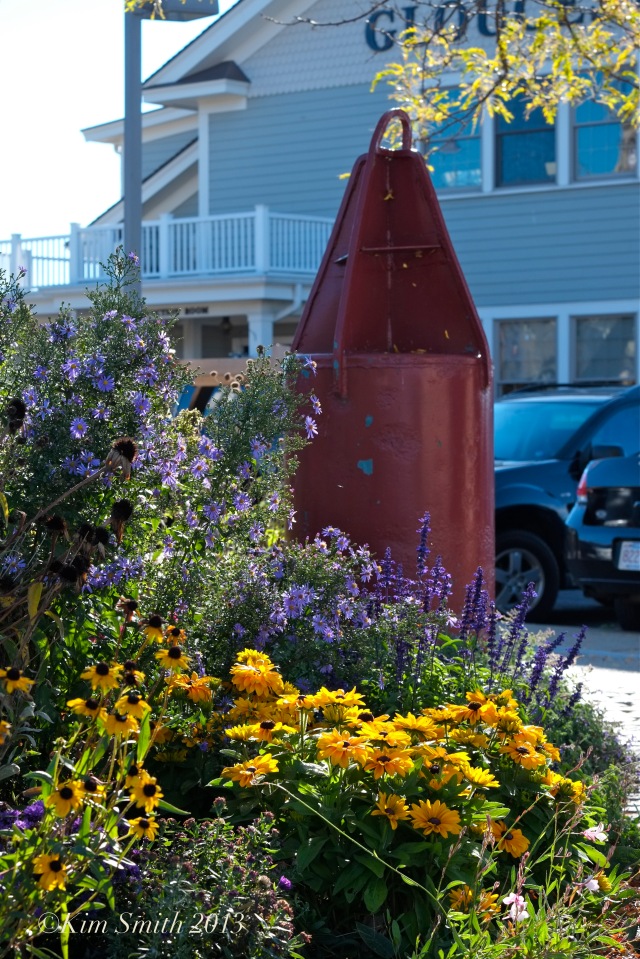 Blooming today at the HarborWalk are asters, goldenrod, annual rudbeckia, and salvia.
Blooming today at the HarborWalk are asters, goldenrod, annual rudbeckia, and salvia.
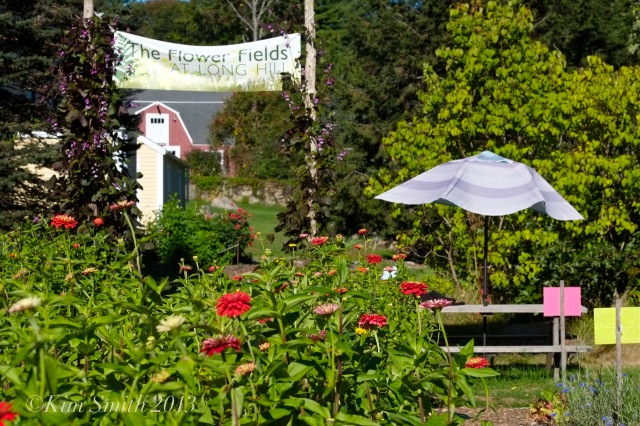 Next stop was the farm stand and then on to Pick Your Own at Long Hill in Beverly. In case any pollinators stop by, I prefer to leave my own zinnias growing in the garden and just love the array of colors in the Long Hill garden mix.
Next stop was the farm stand and then on to Pick Your Own at Long Hill in Beverly. In case any pollinators stop by, I prefer to leave my own zinnias growing in the garden and just love the array of colors in the Long Hill garden mix.
All this gorgeousness before 10:00 and I still have a work day if front of me, but it’s been a September Saturday morning I won’t soon forget! For all these gifts, of friendship and of the beauty that surrounds, I am counting my blessings.
Europe took a significant step as a majority of EU member states voted for a partial ban of three bee-killer pesticides. This, despite fierce behind-the-scenes lobbying from insecticide firms Syngenta and Bayer. “A series of high-profile scientific studies has linked neonicotinoids to huge losses in the number of queens produced and big increases in “disappeared” bees – those that fail to return from foraging trips. Pesticide manufacturers and UK ministers have argued that the science is inconclusive and that a ban would harm food production, but conservationists say harm stemming from dying pollinators is even greater.” (The Guardian, UK).
It is a landmark vote and was supported by petitions signed by millions of people. Although it is only a two year ban, the hope is the ban will give the beleaguered bee a break, and allow time for reexamination of data. Under the EU measures, restricions on the following apply: for treating seeds, soil and leaves on flowering crops attractive to bees such as corn, sunflowers and rapeseed (the source of canola oil). The products may still be used on crops like winter wheat for which the danger to bees is deemed to be small. Use by home gardeners will be prohibited.
The three banned insecticides are imidacloprid, thiametoxam, and clothianidin. The neonicotinoid I see commonly listed on pesticides that are readily available to the home gardener is imidacloprid. I urge every home gardener not to use pesticides. I don’t use them, ever, in my own garden, and never in both the private and public gardens that I design and maintain. Several years ago, I reported that Alain Baraton, the head gardener at the Palace of Versailles stopped using pesticides at the palace gardens. Within the year, a natural balance began to take hold in the gardens, including the return of songbirds to the gardens which in turn eat the insects. If the no-pesticide policy is successful at Versailles, which receives millions upon millions of annual visitors, a pestide ban can certainly be implemented for our private homes and public spaces.
A dear friend of mine, Heidi Kost-Gross, is Vice Chair of the Natural Resources Commission for the Town of Wellesley (garden club readers–she is also President of the Federated Garden Club of Massachusetts). Heidi has been instrumental in pesticide reduction throughout Massachusetts. The Wellesley Natural Resources Commission has created an outstanding Pesticide Reduction Resource Guide for Citizens and Municipalities of Massachusetts, which is available for free to distribute anything found in the guide.
Magnolia viginiana and Eastern Carpenter Bee
Happy to see cerulean skies and Mr. Sunny this morning–even if only briefly!
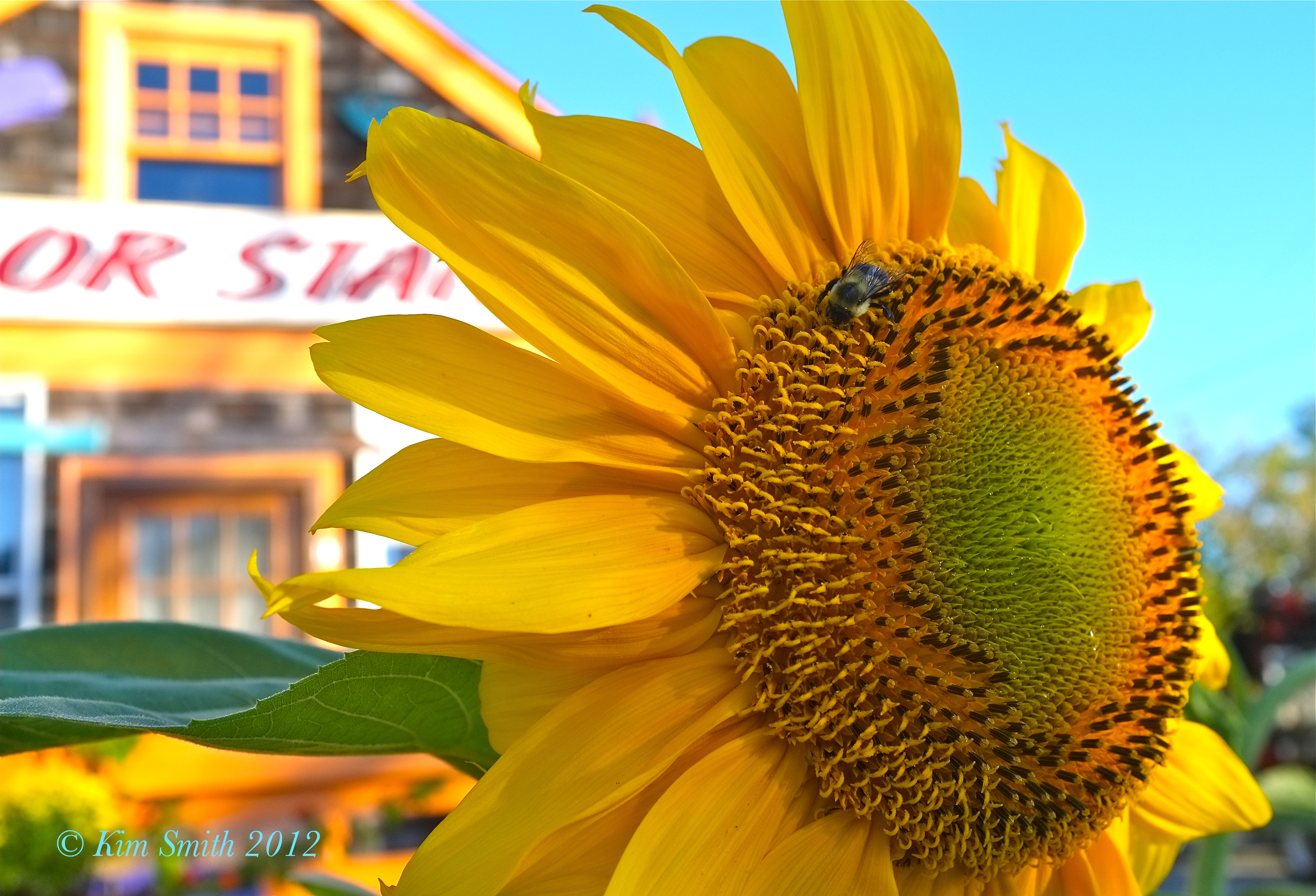 Sailor Stan’s Sunflower Rocky Neck Gloucester
Sailor Stan’s Sunflower Rocky Neck Gloucester
~
To view larger, click on the image. At my Close-up Photography Workshop yesterday, one of the students, who also follows my blog and GMG requested that I, or any of the GMG contributors, include the extended photo information. It is time consuming to retrieve this information and I am not sure I will always be able to accommodate although I do believe it is a great learning tool. In the above image, to see the extended information, run the cursor over the image and it will be displayed with the title. Let me know if you find this information helpful.
![DSC_2668 [Desktop Resolution] DSC_2668 [Desktop Resolution]](https://goodmorninggloucester.files.wordpress.com/2009/07/dsc_2668-desktop-resolution.jpg)